Profile
Blog
Photos
Videos
Cuba - More than old cars
Weather: 31º C initially cloudy then sunny
Today we are on a day tour to Evora, an historical/monumental city. We were picked up by our 30 year old guide (Leonore we think) who then drove us to pick up the other 2 joining us. These 2 guys were friendly smiling Indian Psychiatrists attending a conference here. One lives in Invercargill and the other Melbourne.
On the way we came across many storks nesting on the high tension electrical towers. We had seen storks while we were in Spain and also a couple of years ago when we were in Turkey. They do not nest in trees but instead nest in very exposed areas and return to the same nest each year. Some of this might be due to their wingspan.
On the way to Evora we called in to the oldest Cromlech in Southern Europe dating back 7,000 years. Never heard of Cromlech we hear you say; neither had we until today. It is apparently a term, typically used by the French, Spanish and Portuguese, to describe prehistoric megalithic structures. The ones we visited were called Almendres Cromlech due to their shape being similar to almonds. These ones were only discovered in 1966. Must have been 60 or 70 of them at this site. Some of them had carvings on them and although they could be felt they could not be seen clearly.
While there we also had a good look at the cork trees, a protected tree in Portugal. These trees cannot have their cork harvested until they are about 25 years old. Then they can be harvested every 7-9 years but the cork cannot be used in wine bottle corks until the tree is about 52 years old. It can however be used for other things and later on when we were in Evora we would be visiting a cork shop. The people who harvest the cork have very specialised jobs and their skills are only passed down within their families. Although it may seem easy to do it is not. It is obviously important that the trees do not die as a result of their activities. They are apparently very well paid.
Another item pointed out to us was a thistle called Cardo which is used to curdle milk for cheese making as well as a herb to treat various ailments. The cheeses made this way are called Cardoon cheese.
Now back down the bumpy unpaved single lane road to get onto some decent roading and off to caffeinate the guide before heading to Evora. Evora is to be a walking tour within the walled part of the city. Due to the impending heat our guide wanted to show us around the city without going into anything until later in the day when the temperature climbed. Our guide originally came from Evora so was known to quite a few locals. While with us she bumped into her brother, a couple of girlfriends and pointed out to us her ex boyfriend with his new girlfriend on his arm – not sure she was happy about that - hmmm.
Part of the wandering included seeing the place where Vasco da Gama used to live and mention of the fact that it was thought he was given the royal decree in Evora to start his sea journey to India. After a while we ended up in the promised cork shop. We had no idea that cork could be used for so many things and saw purses, handbags, shoes, phone cases, jewellery, watch straps and more. The piece de resistance was a dress made of cork. Anne bought a sun glasses case – must remember to declare it at customs when we return.
Up the hill to see the Roman forum that had half a dozen or so columns in pretty good shape. It had been reconstructed from pieces found in the archaeological dig and needed very little additional pieces made to put it together. Normally there is quite a lot of new blocks designed to fill the missing bits but this was not the case here.
We had the option of going to a traditional lunch but unfortunately the restaurant, which was off the beaten path, was closed. Wasted a bit of our free time to find that out. We ended up at one near the Cathedral and continue to be disappointed with the food we have had here. Our dinner later in the day did nothing to change this.
Our guide had gone to her parents place for lunch and would meet us in 2 hours giving us time to have a look at the Cathedral after our lunch, before meeting her in the main square. Built during the 12th century after the Moors had been defeated, it sits on the highest part of the city. It is predominantly Gothic in style and its 2 towers are different. We bought tickets to enable us to go up one of the towers onto the roof, visit the Cloister and the Treasury. In the nave of the cathedral there is statue of a pregnant Virgin Mary. One of our psychiatrists mentioned that there was apparently a pregnant madonna in a church at the Oxford University but she was moved outside the church once people realised she was pregnant.
We then met the others and the guide and set off for some wine tasting. Tasted one white, a rose and 2 reds from a local vineyard that had a shop in the town. Did not recognise any of the grapes except in the red blend – one of the grapes was cabernet sauvignon. We liked 3 of the wines and purchased a white and a rose. We were pushed through the tasting and the amount we got to taste was 1 finger (almost). We then found out why we were rushed as a group of about 25 arrived. Of course there were more sales to be made from this group than our small one. Part of our tour was to include the making of traditional cakes by the nuns however our guide had gone and procured some, cakes that is, and suggested we had them while tasting the wine. We think that seeing her ex boyfriend with another girl probably got under her skin and she wanted to get back to Lisbon and her new boyfriend. Anyway we did not get enough wine and did not learn about making the traditional egg and almond tarts!
The last visit was to the Church of St. Francis and the Chapel of the Bones. Our guide had not discussed this with us so it was a bit of surprise to walk into a chapel where the walls were covered with human skulls and bones. The entrance to the chapel has the following warning over it - Nós ossos que aqui estamos pelos vossos esperamos (“We, the bones that are here, await yours."). The chapel was built by a 16th century Franciscan Monk who wanted to get across the message that life is transitory. It does not matter who you are or your station in life – this is how you end up. There are also 2 desiccated corpses hanging from the wall – an adult and a child. There are of course different stories around this.
Eerily the bones and skulls had been very carefully arranged. Where did they get the skulls and bones? There are many stories but the one that seems to ring true is that they are the 5,000 skeletons of monks from a dozen or so local church graveyards. Other stories include victims of the black plaque and then those from the inquisition. Apparently the Portuguese inquisition started some 40 years after the Spanish one started and of course during that time the Jewish population expanded greatly with many leaving Spain for Portugal. Back to the bones and skulls – thought provoking - as it was meant to be.
Left the old town, had a quick drive around the outer part of the wall and headed back to Lisbon. This time we entered Lisbon from a different direction. The way out was over the bridge that looks like the San Francisco Suspension Bridge, now called the 25th of April Bridge. It was actually designed by the same person who designed the Golden Gate Bridge. Coming back was over the Vasco da Gama Bridge, the longest bridge in Europe when the viaducts are included – 13kms – or 17kms if you included dedicated access roads.
After being dropped off the hotel we were in need of a full glass of wine and some good food. Got one but not the other – leave it up to you to decide which was ok.
Today we are on a day tour to Evora, an historical/monumental city. We were picked up by our 30 year old guide (Leonore we think) who then drove us to pick up the other 2 joining us. These 2 guys were friendly smiling Indian Psychiatrists attending a conference here. One lives in Invercargill and the other Melbourne.
On the way we came across many storks nesting on the high tension electrical towers. We had seen storks while we were in Spain and also a couple of years ago when we were in Turkey. They do not nest in trees but instead nest in very exposed areas and return to the same nest each year. Some of this might be due to their wingspan.
On the way to Evora we called in to the oldest Cromlech in Southern Europe dating back 7,000 years. Never heard of Cromlech we hear you say; neither had we until today. It is apparently a term, typically used by the French, Spanish and Portuguese, to describe prehistoric megalithic structures. The ones we visited were called Almendres Cromlech due to their shape being similar to almonds. These ones were only discovered in 1966. Must have been 60 or 70 of them at this site. Some of them had carvings on them and although they could be felt they could not be seen clearly.
While there we also had a good look at the cork trees, a protected tree in Portugal. These trees cannot have their cork harvested until they are about 25 years old. Then they can be harvested every 7-9 years but the cork cannot be used in wine bottle corks until the tree is about 52 years old. It can however be used for other things and later on when we were in Evora we would be visiting a cork shop. The people who harvest the cork have very specialised jobs and their skills are only passed down within their families. Although it may seem easy to do it is not. It is obviously important that the trees do not die as a result of their activities. They are apparently very well paid.
Another item pointed out to us was a thistle called Cardo which is used to curdle milk for cheese making as well as a herb to treat various ailments. The cheeses made this way are called Cardoon cheese.
Now back down the bumpy unpaved single lane road to get onto some decent roading and off to caffeinate the guide before heading to Evora. Evora is to be a walking tour within the walled part of the city. Due to the impending heat our guide wanted to show us around the city without going into anything until later in the day when the temperature climbed. Our guide originally came from Evora so was known to quite a few locals. While with us she bumped into her brother, a couple of girlfriends and pointed out to us her ex boyfriend with his new girlfriend on his arm – not sure she was happy about that - hmmm.
Part of the wandering included seeing the place where Vasco da Gama used to live and mention of the fact that it was thought he was given the royal decree in Evora to start his sea journey to India. After a while we ended up in the promised cork shop. We had no idea that cork could be used for so many things and saw purses, handbags, shoes, phone cases, jewellery, watch straps and more. The piece de resistance was a dress made of cork. Anne bought a sun glasses case – must remember to declare it at customs when we return.
Up the hill to see the Roman forum that had half a dozen or so columns in pretty good shape. It had been reconstructed from pieces found in the archaeological dig and needed very little additional pieces made to put it together. Normally there is quite a lot of new blocks designed to fill the missing bits but this was not the case here.
We had the option of going to a traditional lunch but unfortunately the restaurant, which was off the beaten path, was closed. Wasted a bit of our free time to find that out. We ended up at one near the Cathedral and continue to be disappointed with the food we have had here. Our dinner later in the day did nothing to change this.
Our guide had gone to her parents place for lunch and would meet us in 2 hours giving us time to have a look at the Cathedral after our lunch, before meeting her in the main square. Built during the 12th century after the Moors had been defeated, it sits on the highest part of the city. It is predominantly Gothic in style and its 2 towers are different. We bought tickets to enable us to go up one of the towers onto the roof, visit the Cloister and the Treasury. In the nave of the cathedral there is statue of a pregnant Virgin Mary. One of our psychiatrists mentioned that there was apparently a pregnant madonna in a church at the Oxford University but she was moved outside the church once people realised she was pregnant.
We then met the others and the guide and set off for some wine tasting. Tasted one white, a rose and 2 reds from a local vineyard that had a shop in the town. Did not recognise any of the grapes except in the red blend – one of the grapes was cabernet sauvignon. We liked 3 of the wines and purchased a white and a rose. We were pushed through the tasting and the amount we got to taste was 1 finger (almost). We then found out why we were rushed as a group of about 25 arrived. Of course there were more sales to be made from this group than our small one. Part of our tour was to include the making of traditional cakes by the nuns however our guide had gone and procured some, cakes that is, and suggested we had them while tasting the wine. We think that seeing her ex boyfriend with another girl probably got under her skin and she wanted to get back to Lisbon and her new boyfriend. Anyway we did not get enough wine and did not learn about making the traditional egg and almond tarts!
The last visit was to the Church of St. Francis and the Chapel of the Bones. Our guide had not discussed this with us so it was a bit of surprise to walk into a chapel where the walls were covered with human skulls and bones. The entrance to the chapel has the following warning over it - Nós ossos que aqui estamos pelos vossos esperamos (“We, the bones that are here, await yours."). The chapel was built by a 16th century Franciscan Monk who wanted to get across the message that life is transitory. It does not matter who you are or your station in life – this is how you end up. There are also 2 desiccated corpses hanging from the wall – an adult and a child. There are of course different stories around this.
Eerily the bones and skulls had been very carefully arranged. Where did they get the skulls and bones? There are many stories but the one that seems to ring true is that they are the 5,000 skeletons of monks from a dozen or so local church graveyards. Other stories include victims of the black plaque and then those from the inquisition. Apparently the Portuguese inquisition started some 40 years after the Spanish one started and of course during that time the Jewish population expanded greatly with many leaving Spain for Portugal. Back to the bones and skulls – thought provoking - as it was meant to be.
Left the old town, had a quick drive around the outer part of the wall and headed back to Lisbon. This time we entered Lisbon from a different direction. The way out was over the bridge that looks like the San Francisco Suspension Bridge, now called the 25th of April Bridge. It was actually designed by the same person who designed the Golden Gate Bridge. Coming back was over the Vasco da Gama Bridge, the longest bridge in Europe when the viaducts are included – 13kms – or 17kms if you included dedicated access roads.
After being dropped off the hotel we were in need of a full glass of wine and some good food. Got one but not the other – leave it up to you to decide which was ok.
- comments





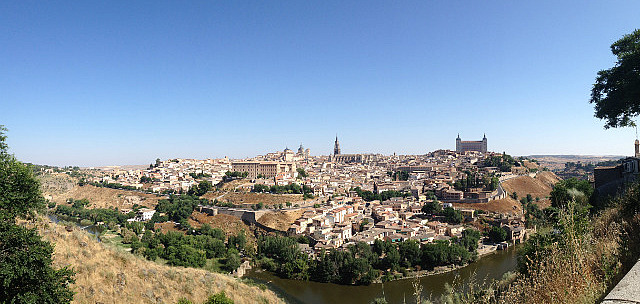
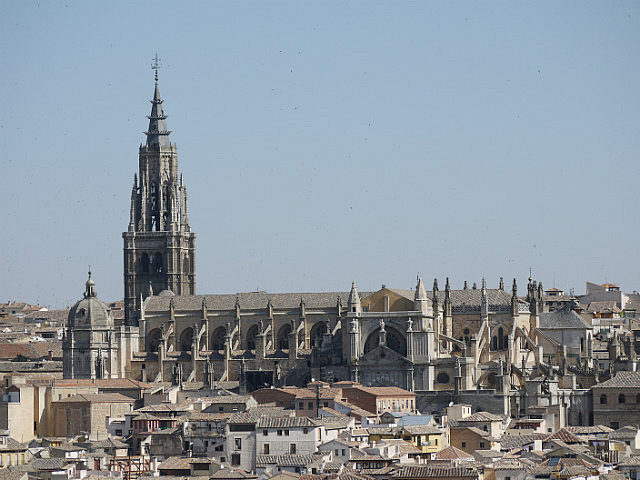
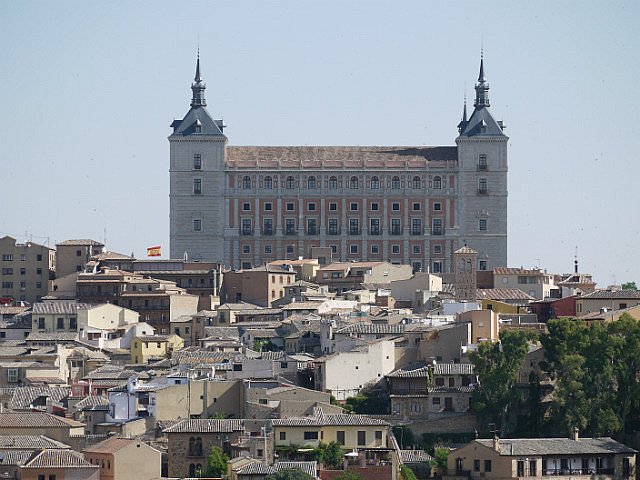
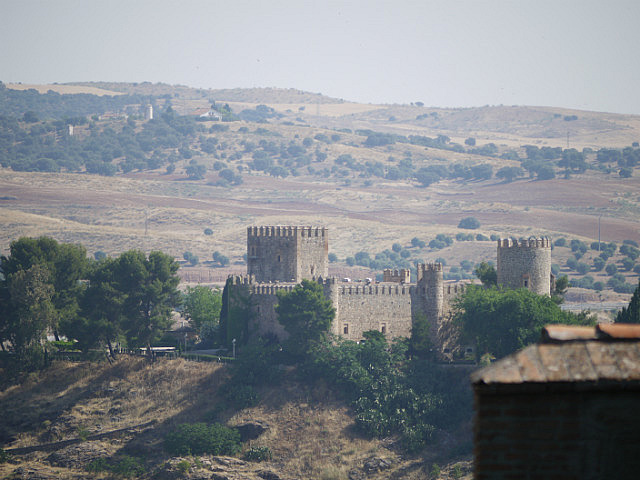
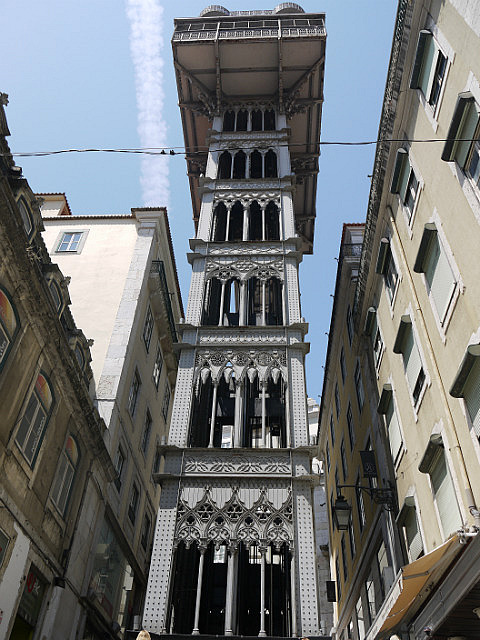
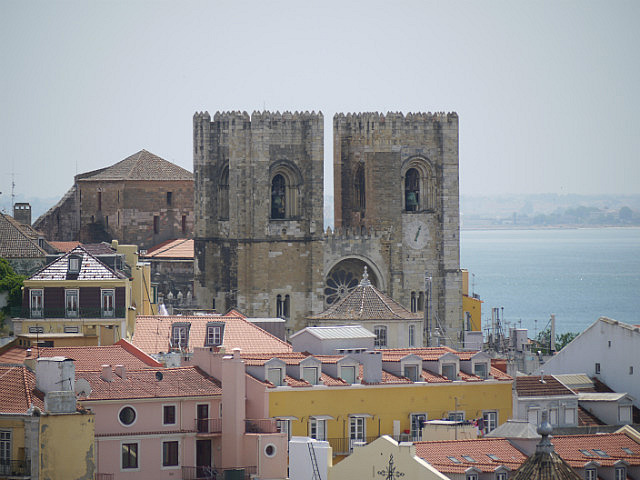
Gael Loved the story of the guide's ex boyfriend; it must have been comforting for her to know that there were a couple of psychiatrists tagging along - she could have probably got a $500 an hour consultation for nothing if she played her cards right! The bones and skulls sound a little creepy! Amazing how far civilization has come - or has it!!